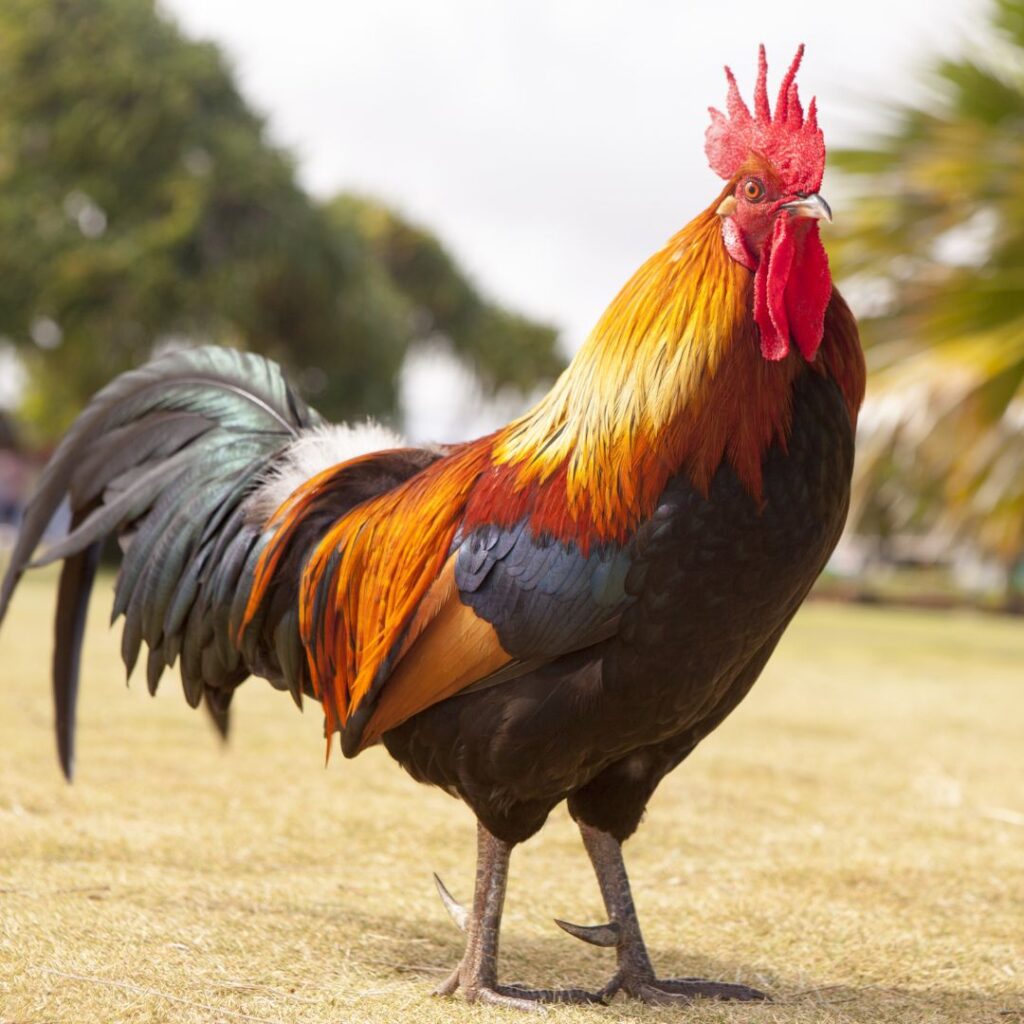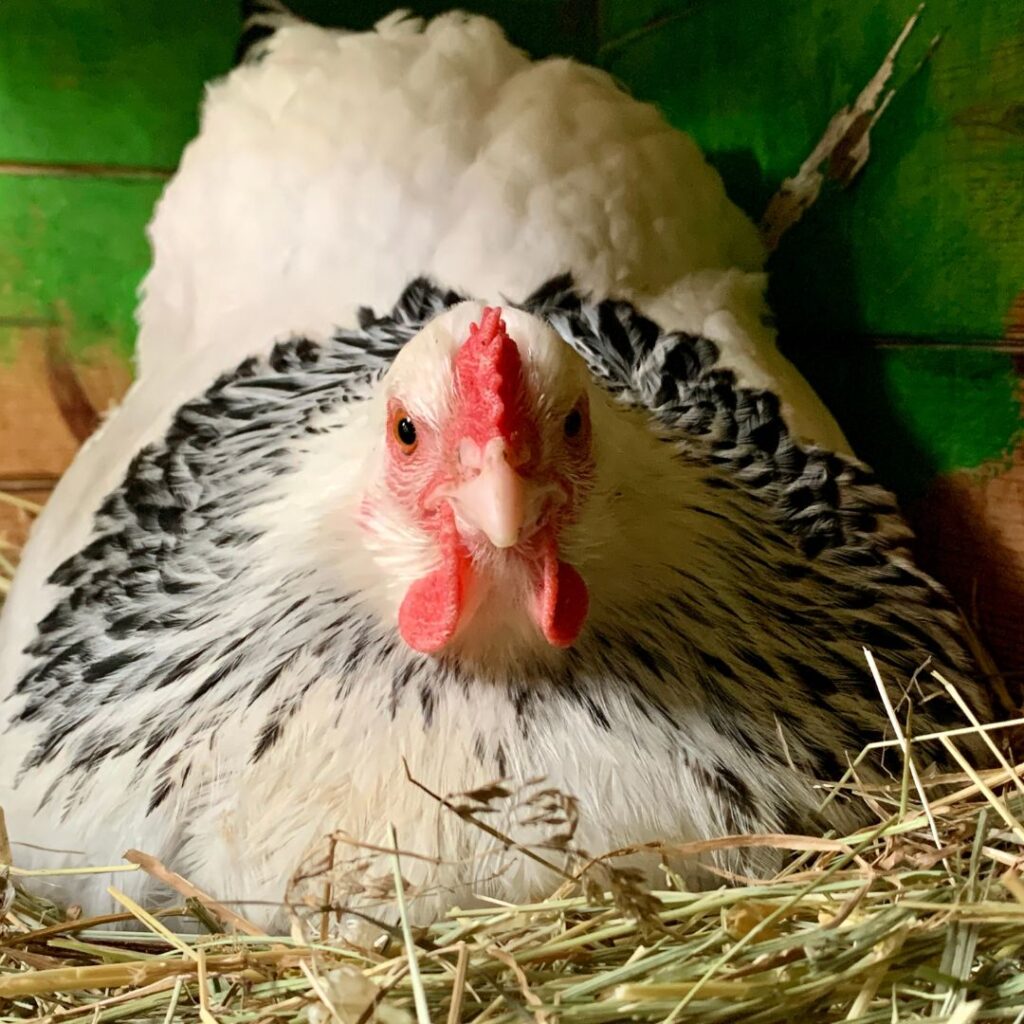How to Know the Difference Between a Chicken and Hen
Learn how to know the difference between a chicken and hen, chicken terminology, parts of the chicken, and the life cycle of a chicken!

So you want to know if a hen is a chicken… Well, yes, yes it is. A rooster is a chicken as well. Chicken is the term that covers the species in general. Terms like hen, rooster, chick are all ways to describe a chicken.
If those terms are new to you, then this post is for you! I will go into great detail about chickens, their breeds, and their life cycles. This information will be helpful to those who are considering getting backyard chickens.
Of course you will need to know more than this post covers to take care of chickens, but this is a great start for better understanding a chicken.
Chicken terminology
- Rooster- male chicken, they often have a larger comb than a hen.
- Comb- the red growth on top of a chicken’s head.
- Pullet egg- the first egg that a chicken lays. These eggs tend to be very small.
- Pullet- young female chicken that is three months to one year of age.
- Hen- mature female chicken over one year of age that will lay eggs, though chickens can start laying eggs at around six months of age.
- Cockeral- young male chicken or sometimes just called a young rooster.
- Chicks- baby chickens. There are female chicks and male chicks but both can just be called chicks. Often times you won’t know the sex of a chick until it grows into a chicken.
- Broody Hen- When a hen decides she wants to sit on her eggs. Her body temperature raises and she often times will eat less food and water.
- Flock- a group of chickens.
- Vent-The location where the egg will come out of the female chicken/hen
- Vent sexing- examining the chick by opening it’s vent to see its reproductive organs to determine the sex of the chick. This process takes practice and skill to become successful at it.
- Wing sexing- Looking at the wing of the chick. If the wing has only one curve it is a male chick. If the wing has two curves it is a female chick. Though some say it is more difficult to actually identify a chick’s sex this way.
Parts of a chicken

A healthy bird will have a bright red comb and clear eyes. When a chicken has a faded comb then the chicken is either sick or getting old. In fact that is how some people tell if their chickens are getting older. If you look at a chickens eyes and they look clouded or covered in mucous, then the chicken is likely sick as well.
Chickens have ears and they are hidden under their feathers. Other physical traits of a chicken are tail feathers, neck feathers, eyes, wings, and legs with scales. They have spurs and toenails on their feet. In addition to the red comb on top of their heads, they have a red waddle that is below their beak.
Check out the chicken diagram above.
Who can own chickens?
This is a complicated question as it is not as simple as whoever wants them or has space for them. When it comes to having backyard flocks or domestic chickens there are some things you have to research concerning where you live.
First you will need to start with your county. Check your county rules for whether or not you can even have chickens. If your county allows chickens you will need to read the fine print. For example: some counties allow chickens, but the coop may have to be a certain distance from your home or your neighbor’s home. Sometimes there are rules considering the distance from property lines. You will also want to look into whether or not your county allows roosters. Because roosters can be pretty loud, many counties will NOT allow you to have roosters, just hens.

Once you have researched your county rules on chickens, hens and roosters, look into your city requirements. Some cities will have even more strict rules than the county. Say your county allows 10 chickens, but your city only allows you to have a small flock of 5 hens.
The next thing you will need to consider is if your actual neighborhood allows chickens. There are many neighborhoods that do NOT allow chickens even if your city and your county allow them. The neighborhood rules trump the city when it comes to backyard chickens. You really need to do your research on this.
I have heard many times of people spending money to build chicken coops, spend time raising the chicks only to find out that they aren’t allowed to have them. They then have to get rid of their hard earned chickens!
What are the different chicken breeds?
There are so many types of chickens that vary across the world. One chicken that might be popular in the United States may be unheard of across the globe. That being said, the varying breeds of chickens all came from their wild ancestor, the red jungle fowl.
We have since domesticated the chicken and created the differing breeds. Click HERE to see a list of the chicken breeds. A certain breed of chicken will have different colors when compared to another breed. Some people will chose their backyard chickens simply by what they look like, no matter the egg production.

Aside from egg production, chickens have differing egg color. There are white eggs, brown eggs, blue eggs, spotted eggs, etc. Having a variety of different chicken breeds will create an assortment of colors to your egg basket, which is something that many people aspire to have.
Say you are interested in getting hens, there are a few things to consider when selecting your breed of chicken. There is egg production as I mentioned before. Are you wanting to get as many eggs as you possibly can? Or does that not matter to you?
Research what chicken produces the most eggs per year. Some people raise chickens as a hobby and want more friendly chickens. There are chickens that tend to be more friendly than others.
Can you raise chickens for meat?
Yes, if you want to raise your own chicken meat you will want to purchase meat chickens.
These are chickens that genetically are going to grow bigger and they will grow faster as well. Meat chickens don’t typically lay eggs, or you harvest them before they become mature chickens and can produce eggs.
But wait, what if you want to raise chickens for meat AND eggs. Then you will want to select a chicken breed that is a dual-purpose breed of chicken. These chickens are somewhere in the middle. They lay eggs, but aren’t the super producers.
They are bigger on average than the typical egg layers. So you can have a little from each world.
The life cycle of the chicken

The chicken starts out in the egg. They receive nutrients from the egg yolk to grow and develop into a chick. Once the chick inside the egg reaches about three weeks of age it will hatch. Then it will be considered a chick for three months.
During this time, the chick is just trying to figure out life. They have somewhat of a high mortality rate at this age as they are somewhat vulnerable. They can drown in their water, forget where their food is, get too hot or too cold, you get the idea.
They also start to grow their feathers as they are just little fluff balls to start out. At about three months of age they are considered a pullet. A pullet is a young chicken. At this point the young chicken is becoming more sturdy and getting closer to sexual maturity. They can start laying eggs between 4-6 months.
Do hens need a rooster to lay eggs?
No, hens will lay eggs at around 4-6 months whether or not there is a rooster present. Some people choose not to have roosters because an aggressive rooster can cause harm to the hens and to people!
Are all chicken eggs fertilized?
No, there must be a rooster present for an egg to be fertilized. So to continue on with the life cycle of a chicken, we get to the fertilized egg. So we have a hen and a rooster together and the hen lays a fertilized egg.

In order for that egg to hatch it either needs to be incubated, or a broody hen will need to sit on the egg for three weeks. After that the egg will hatch and the cycle will continue on. Older hens will slow in their egg production.
Their egg production begins to slow after two years of life. This is why people get new hens each year or every other year, so they will have a continual supply of eggs and don’t end up with a bunch of old hens.
Now that you know that a hen is a chicken, you can continue building your knowledge on chickens and maybe even get some of your own! Comment below if you are planning on getting chickens someday! What breeds are you looking at?
Chickens are great composters for the garden. Thinking of starting a garden? Click HERE to follow a step by step guide for starting your own garden today!


Thank you so much for such a lovely article with informative content. Hope to see more of a similar article.